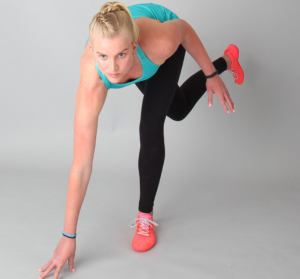Tag Archive for: running
Keep your training on track when you prevent tight hips
Oftentimes, runners experience a feeling of tightness in and around the hip region. Especially if they’ve just begun training and have started increasing their mileage. This tightness is generally a result of stiffness in the hip flexors and prevents runners from running their best. Hip flexors, particularly the iliopsoas, are important to runners. The iliopsoas acts as the strongest flexor of the hip and is the prime mover of hip flexion. Think of your hips as the wheels that propel you forward. Tight hips can lead to poor running form and an increased risk of injury. Here are a few things you need to know about tight hips.
What causes tight hips in runners?
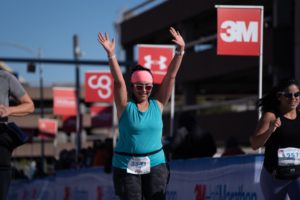
Don’t let tight hips keep you from achieving your goals!
When running, your muscles are repeatedly used in the same way. As a result, runners can experience tight hips if they don’t stretch those muscles in the opposite direction.
Another reason is overcompensation due to weakness in other muscles like your core and glutes. When other muscles used during running are weak, others have to take over and work harder. This is why cross-training is important and helpful.
Lastly, your hips can tighten if you don’t allow them to rest and recover. As simple as it sounds, this is another reason why effective recovery is so vital to a training plan. There are many different ways runners allow their body to recover: yoga, foam rolling, deep stretching, massage, etc.
Signs and symptoms
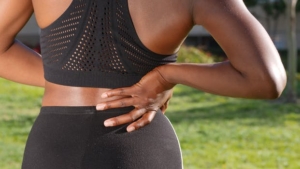
Lower back pain could be an indicator that your hips are tight.
The most obvious sign is a feeling of tightness or stiffness in your hips. Other signs include pain in your lower back, neck, or glutes due to overcompensation or abnormal running form. Runners might also experience difficulty when stretching.
Prevention
As well as regular rest and recovery, there are also many exercises, stretches, and workouts that can help prevent tight hips. Don’t forget about foam rolling! Add the technique below to your foam rolling routine to keep your hips feeling loose and refreshed.
Foam rolling technique
- Get in a plank position (on your forearms)
- Place the roller under the front of one hip
- Roll up and down slowly, focusing on the tight spots
- Twist to the side so you include the outside of your hip
- Spend 1-2 minutes in the area, then switch legs
- Breathe deeply throughout
The two stretches below will help open up and strengthen your hips. Complete them before and after your run.
Skater squat
- Stand with your legs slightly wider than hip-width
- Squat down
- As you come up, slowly put your weight on the left leg
- Extend your right leg back
- Hold this for as long as you can, up to 60 seconds (place your hand on the ground for help balancing)
- Switch legs and repeat 10 times
Crescent lunge knee-up
- Lift your right knee up to 90 degrees
- Stretch your arms out to the side to help balance
- Bring your right knee towards your chest
- Switch legs and repeat 10 times
Training your body to run long distances isn’t all about mileage. Proper rest and recovery are just as important to any run or workout. So are stretching, cross-training, and foam rolling. Tight hips can alter your form and lead to discomfort and potentially injury. Add the two exercises mentioned to your routine to help prevent stiffness in your hips and keep working towards your goals.
Learn how to strengthen your glutes for a better runner’s butt
Runners should always keep their health and physique in proper condition. This is key to many, many happy miles! An effective training plan emphasizes a healthy diet, proper nutrition, and various runs. However, many runners are not aware of how much a better runner’s butt can help. Building strong glutes is an important aspect that helps avoid lower-body injuries and improve form. Learn about some cool tips for strengthening your glutes and start working towards a better runner’s butt. Pro tip: these glute exercises are a great addition to this effective warm-up routine.
The benefits of stronger glutes
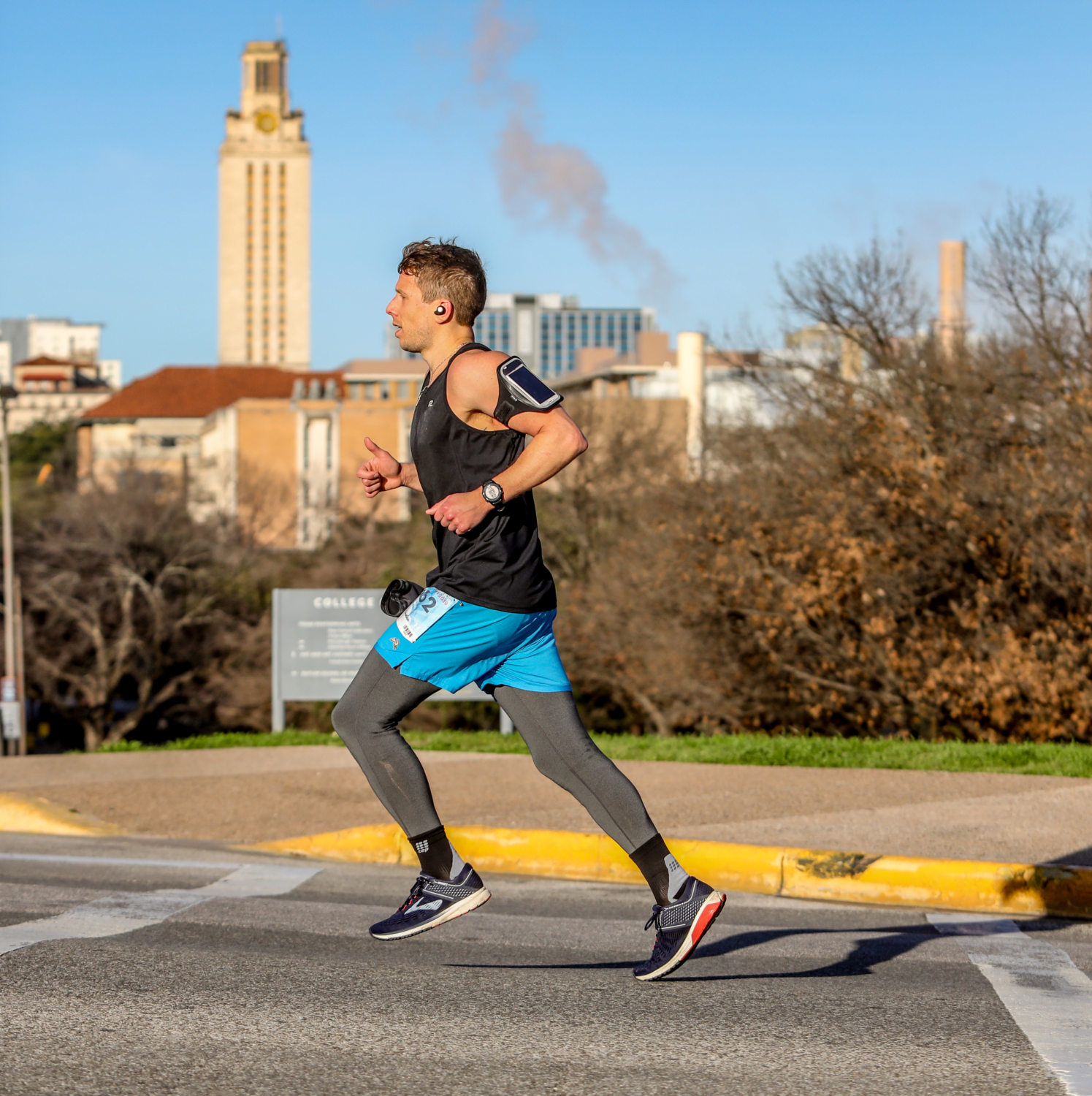
Glute exercises can help improve your form. Credit: Scott Flathouse
The gluteal muscles play a key role in the movement and stability of your hips. Putting a focus on strengthening your glutes is a good practice during training. The top benefit of stronger glutes and a better runner’s butt, you are less prone to injuries. Other benefits include:
- improve body’s balance and stability
- can complete them anywhere
- increase in performance and endurance
- reduction in pain post-running.
Running itself isn’t enough to effectively strengthen the gluteal muscles. Take advantage of the benefits when you include these 4 glute-strengthening exercises. Whether you’re training or in the offseason, they’ll help you get a better runner’s butt. You might be sore after the first few times you use these exercises. That’s okay! Alleviate that sorenes and recover faster when you add Epsom salt baths to your recovery plan.
4 exercises to strengthen your glutes
-
Squats
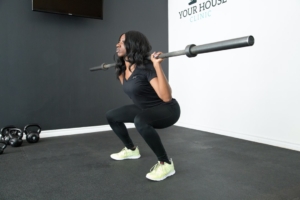
You can complete squats with or without weights.
Squats are a common exercise that’s particularly helpful in strengthening the gluteus maximum muscle. You can use weights if you want, but they’re not necessary. For squats,
- keep your feet shoulder-width apart
- bend your knees until your upper legs are parallel with the ground
- push through your heals
- keep your chest up
- return to an upright position, then repeat
- to start, try 3 sets of 10 squats with a 60-second rest in between each set
-
Glute bridges
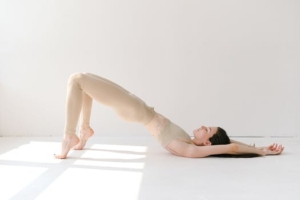
Hold the glute bridge for 1-2 seconds at the top.
These engage your glutes by isolating them with a unique posture. Be slow and deliberate with your movements. This is also great for your core! For glute bridges,
- lie flat on your back comfortably
- keep your legs at a 45-degree angle on a bench (or on the ground)
- lift your midsection straight up, clenching your glutes
- remain here for 1-2 seconds, slowly return to a resting position, repeat
- to start, try 3 sets of 15 glute bridges with a 60-second rest in between each set
-
Lunges

You can move forward or remain stationary during lunges.
Lunges strengthen the gluteal muscles on the front portion of the legs. These can be done by either standing in place or by walking forward. For lunges,
- put your hands on your hips or hold a small weight in each hand
- place one foot forward and the other backward in a staggered position
- in one motion, lunge forward with your front leg making a 90-degree angle and your back knee barely touching the ground
- if balance is an issue, you can place your hands on your knee
- return to an upright position by pressing into your heels, alternate legs, and repeat
- to start, try 3 sets of 10 lunges with a 60-second rest in between each set
-
Dumbbell step-up
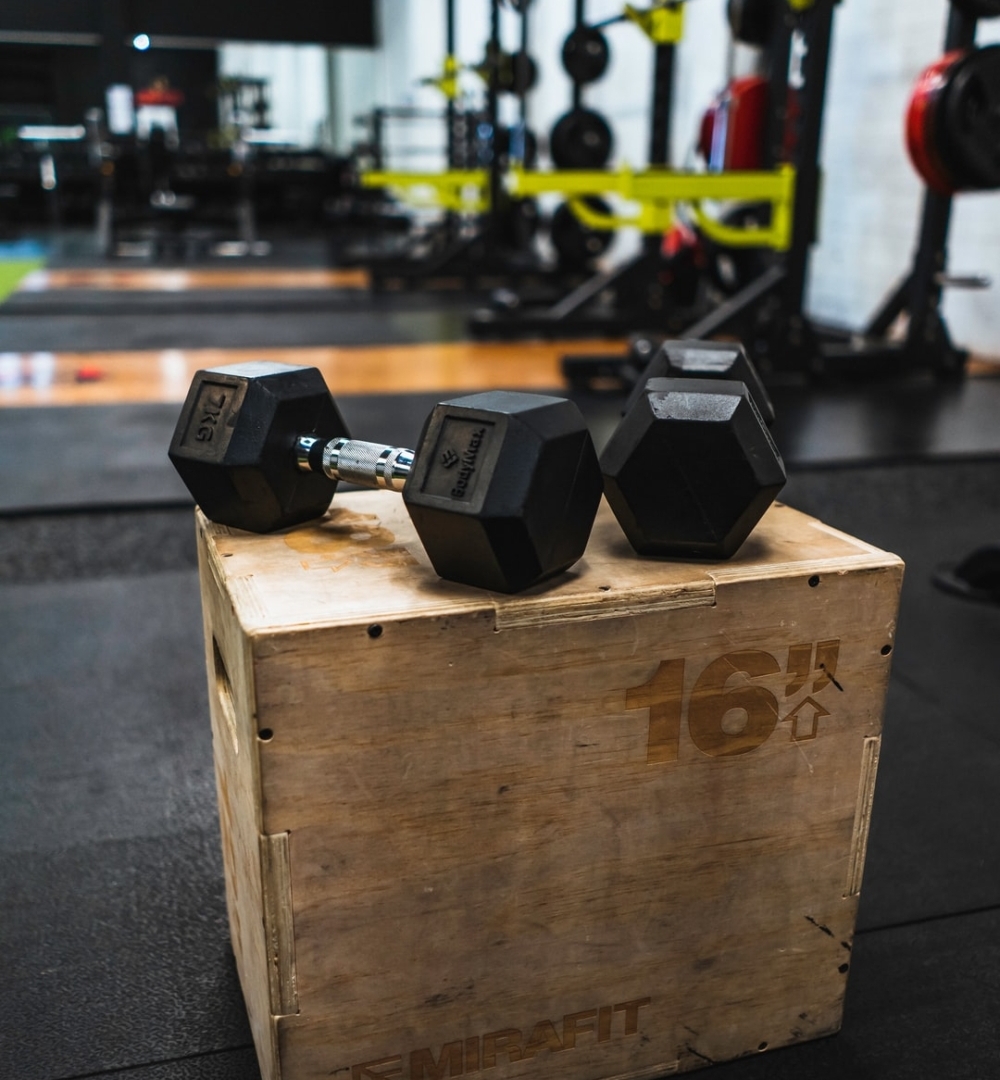
Dumbbell step-ups are an excellent glute-strengthening exercise.
The dumbbell step-up is simple, yet very effective in strengthening your glutes. You will need dumbbells (or something heavy) and a box/bench/chair/curb to step on. For step-ups,
- stand in front of a raised surface in an upright position
- hold a dumbbell in each hand
- with your thigh parallel to the ground, step up onto the bench
- leave the other leg hanging
- slowly return to the initial position, alternate legs, and repeat
- to start, try 3 sets of 10 step-ups (5 for each leg) with a 60-second rest in between each set
Runners are always looking for different ways to improve their performance and reduce injury chances. Strengthening your glutes and creating a better runner’s butt is often an overlooked method of improvement. Incorporate 1 or all 4 of these exercises into your routine. It won’t take long before you begin to see and feel a difference. When you’re ready to jump to the next level, add these booty band workouts to keep strengthening your glutes.
Latest Blogs:
 Running Through the Seasons in Texas: Adapting Your Training for the 3M Half MarathonApril 15, 2024 - 1:06 PM
Running Through the Seasons in Texas: Adapting Your Training for the 3M Half MarathonApril 15, 2024 - 1:06 PM Blaze’s Guide to Austin: Must-Visit SpotsApril 15, 2024 - 12:29 PM
Blaze’s Guide to Austin: Must-Visit SpotsApril 15, 2024 - 12:29 PM 3M Half Marathon Marks 30 Years of Excellence Amid Optimal Race Day SettingJanuary 21, 2024 - 5:40 PM
3M Half Marathon Marks 30 Years of Excellence Amid Optimal Race Day SettingJanuary 21, 2024 - 5:40 PM
NEWSLETTER
Thank you for signing up. You will be the first to know about new releases, giveaways & special projects. Stay tuned.

